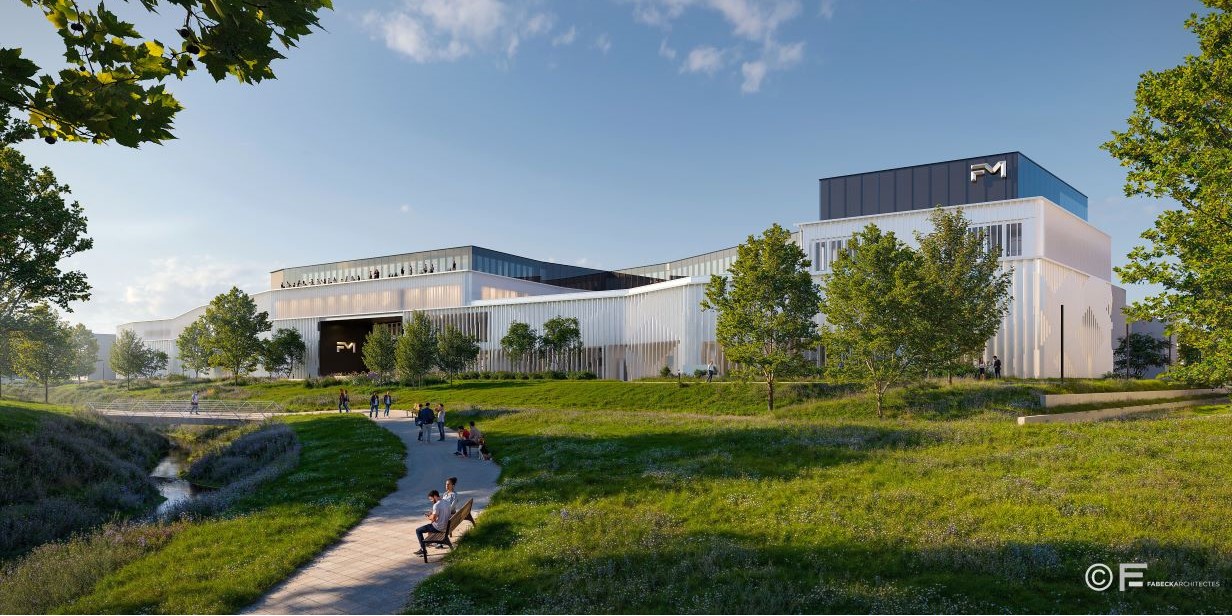Confronting the resilience challenge

(Image rendering of forthcoming FM Science and Technology Centre, Europe, courtesy of Fabeck Architectes)
In a rapidly changing world, the need for research and innovation has never been greater. Artificial intelligence and technology will revolutionize industries across the globe. Understanding business risks associated with the future of industry, including AI, machine learning, automation, and data is more important than ever. Coupled with increased climate-related risks, businesses are increasingly vulnerable to unexpected interruptions.
FM’s forthcoming state-of-the-art research facility in Luxembourg stands at the forefront of those intertwined developments. In March, we celebrated the groundbreaking of the FM Science and Technology Centre, Europe. This 25,500m² (260,000ft²) facility in Luxembourg, our European home since 2017, will enhance our ability to address the unique challenges and opportunities in the region and around the globe. It is just the latest chapter in FM’s loss-prevention story.
FM was founded in 1835 on the fundamental belief that loss is preventable through innovation, research and engineering. Risk transfer, whether in a 19th century textile mill or a 21st century technology-driven facility, is not enough. The context may change, but research and engineering have always been core to our philosophy.
In the 1830s, it meant mills constructed with heavy fire doors and slate shingle roofs. In the 1880s, FM Approvals experimented with fire protection hydraulics, which ultimately led to FM Approvals fire testing in a shed in the middle of an apple farm in Woburn, Massachusetts, US in the early 1900s. We have come a long way since then.
Today we have science and technology research facilities in West Glocester, Rhode Island, US; Norwood, Massachusetts, US; and Singapore. These centers are connected by a large-scale digital immersive ‘co-laboratory’ environment, allowing clients, stakeholders, and FM staff to interact with research and testing performed at any site. They each have their areas of focus, but the common thread is helping see things others don’t.
When the Luxembourg facility is completed in 2027, areas of study will include climate, automation and cyber risks, all of which are in sharp focus. On climate, 2024 was the hottest year on record both globally and in Europe. According to the most recent European State of the Climate report, Europe is the world’s fastest-warming continent. Many impacts were already evident in 2024: the most widespread flooding since 2013, the highest number of days on record with high levels of heat stress, and the lowest number of days on record with strong cold stress.
There was good news, too: The report found a record proportion of electricity generation by renewables in Europe in 2024, at 45 percent.
On automation and cyber, more business and industrial processes are becoming digitized and automated. This will bring new efficiencies to global businesses, but also new risks to consider. Fully automated warehouses, for instance, aren’t just a cyber security challenge. They also pose different fire risks, the sort not easily put to the test on an apple farm. New and innovative storage materials require new and innovative sprinkler protection and fire detection. AI, meanwhile, will empower not just cyber attackers but defenders, too.
The FM Science and Technology Centre, Europe will bring FM’s unique approach to identifying science-based solutions for these sorts of risks even closer to our clients. We recognize the region’s strong talent base in climate sciences, and have established partnerships with European leaders in automation, digital technology, and cyber sciences.
In this ever-evolving landscape, FM is at the forefront of integrating innovation with risk mitigation. Businesses must understand both their exposures, and the steps to best address them. Research and science will be pivotal in that understanding.
This article originally appeared in CIR Magazine.
